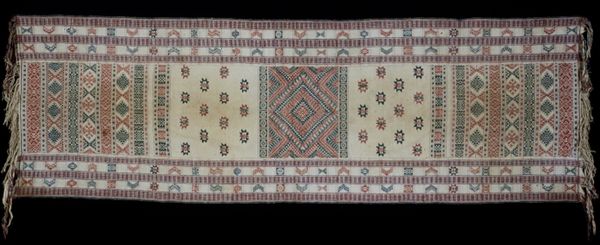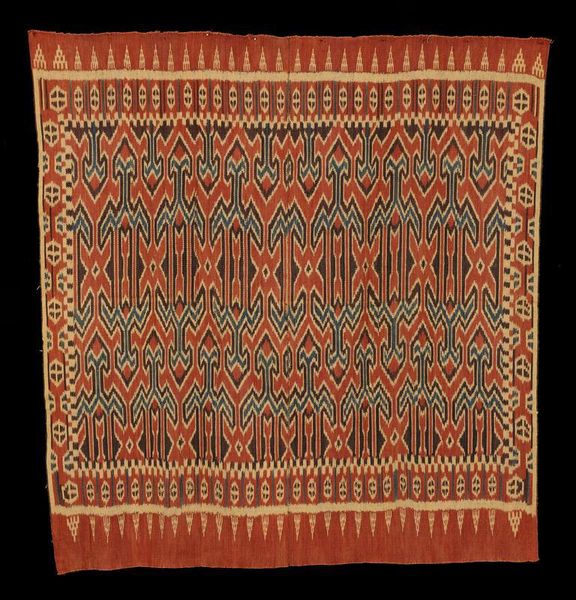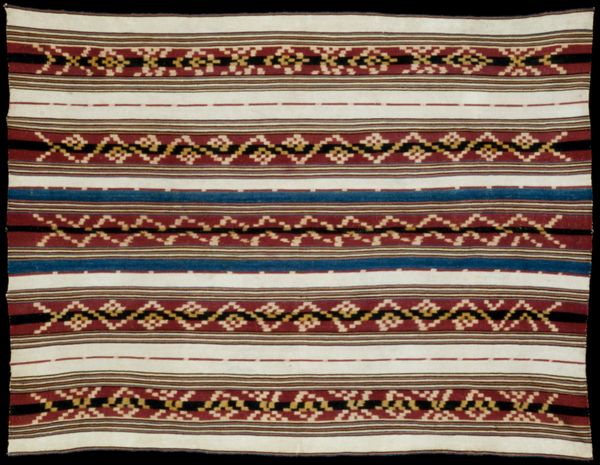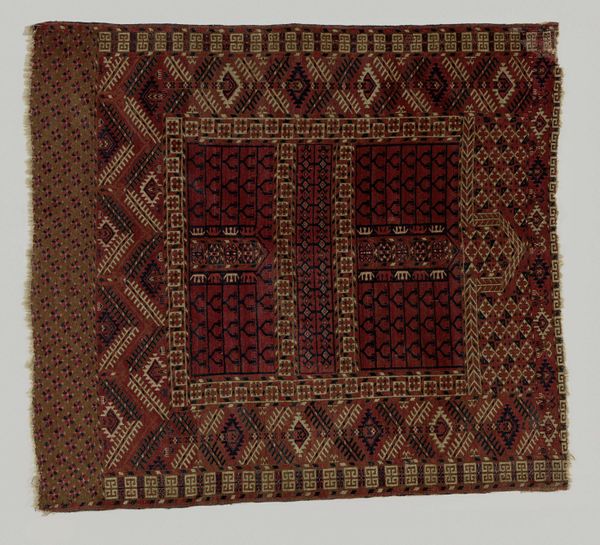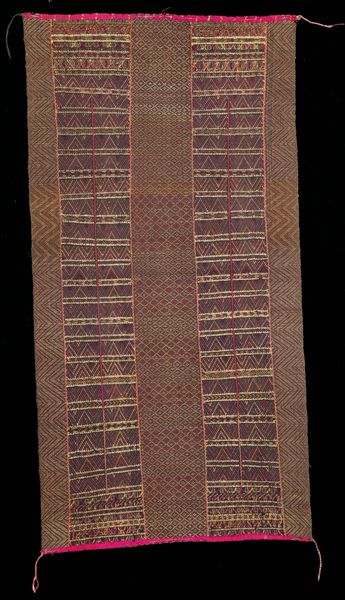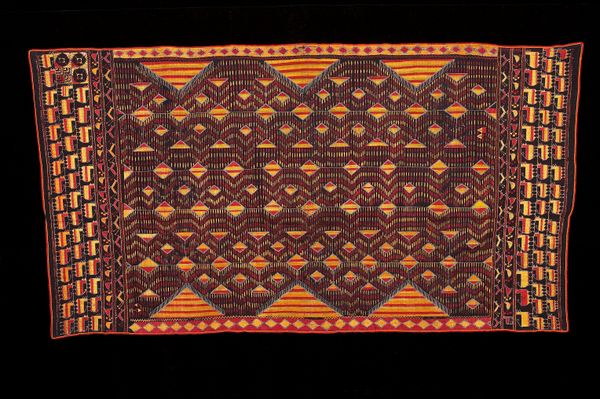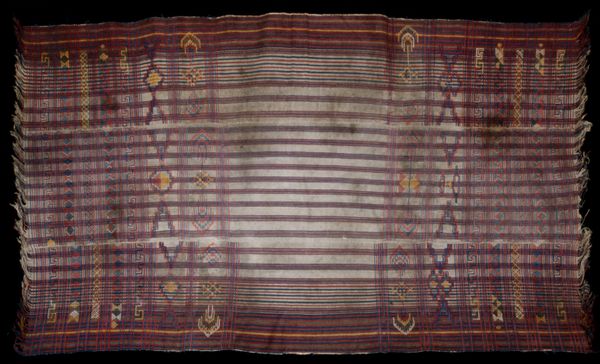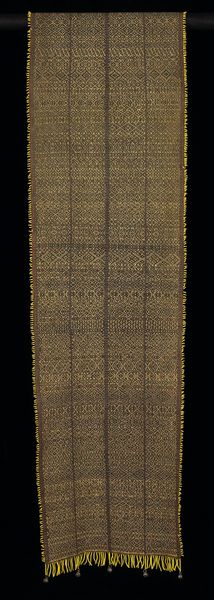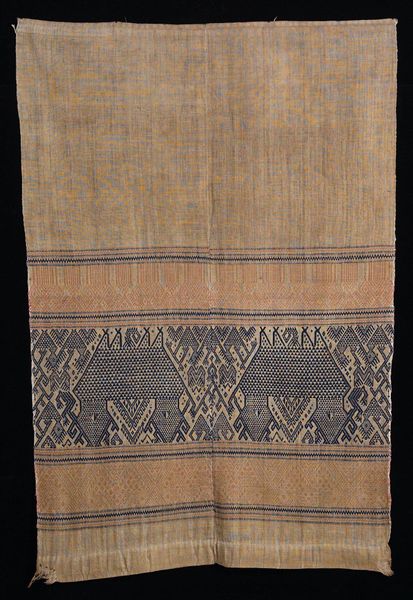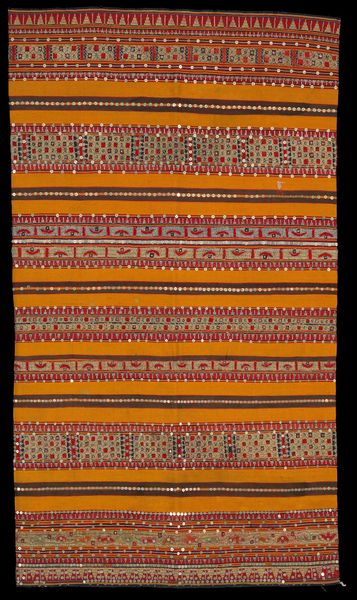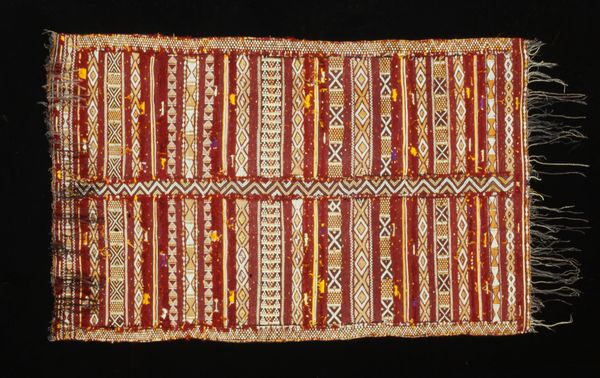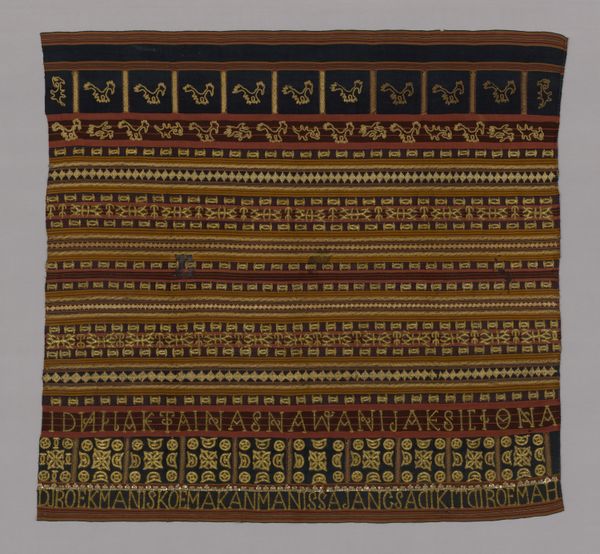
fibre-art, pigment, textile
#
african-art
#
fibre-art
#
pigment
#
pattern
#
textile
#
geometric pattern
#
geometric
#
repetition of pattern
#
pattern repetition
Dimensions: 72 7/16 x 35 15/16 in. (183.99 x 91.28 cm)
Copyright: Public Domain
Editor: Here we have a Tapa cloth, likely created sometime between 1960 and 1970. It’s fiber art with pigment, and I notice this strong emphasis on repetitive geometric patterns. How would you interpret this piece, thinking about its function and display? Curator: It's interesting to consider this Tapa cloth within a broader socio-political context. These cloths were, and are, deeply embedded in cultural practices and ceremonies across many Pacific Island nations. Their role goes far beyond mere decoration; they are tied to status, ritual, and storytelling. How do you think museums change that role? Editor: That's a good question! Putting it on display might freeze a cultural artifact. What do you mean exactly by its ceremonial uses, as in what types of uses beyond daily utility might it have had? Curator: Traditionally, Tapa cloths have been used in rituals marking life events, like births, weddings, and funerals. They also served as gifts in diplomatic exchanges and declarations of status. Their display often reinforces social hierarchies. The patterns themselves, while geometric, often carry symbolic meaning specific to a community or clan, so stripping its function in the community may inadvertently also take some of its contextual significance. Editor: So, what appears to us as a repetitive geometric pattern might be a complex symbolic language only fully understood within its original context. Are we losing part of the artwork by showcasing it outside this setting? Curator: Absolutely. But museums also play a role in preserving and raising awareness. Perhaps, more critical than that preservation aspect is its elevation to high art when originally, though labor intensive, its makers may not have thought of their practice as something as elitist or precious as 'Art.' The question then is, does its presentation in a museum setting do a disservice by presenting it in isolation? Editor: It sounds like showcasing such an object creates a complex exchange, involving appreciation, preservation, and potentially, a loss of cultural depth. I never thought of geometric design having such significance! Curator: It demonstrates how powerfully an object can embody history and social dynamics. Examining art through its cultural implications and the politics of display challenges us to see beyond the aesthetic.
Comments
No comments
Be the first to comment and join the conversation on the ultimate creative platform.
